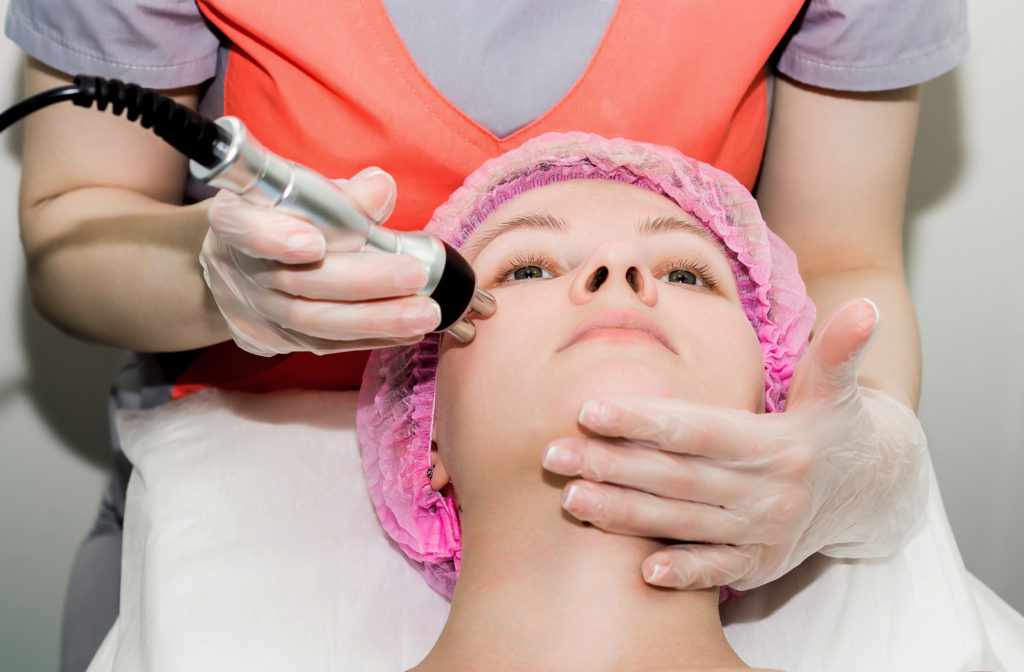Dry eyes are more than an annoyance; they can damage the surface of your eye and lead to infections. If you have this condition, your eye doctor can recommend several treatments to help relieve your symptoms. One of these is radiofrequency treatment, but what is this?
Continue reading to learn more about radiofrequency treatment, including what it is, how it works, and what you should expect during your appointment.
What is Dry Eye Disease?
Dry eye disease is a condition where your tears cannot keep your eyes moist, and almost 6 million Canadians suffer from it. This condition can happen when issues occur in your tear film. With 3 layers (Oil, aqueous fluid, and mucus), your tear film helps keep your eye’s surface clean and protected.
Problems can develop in the tear film, leading to decreased tear production or increased tear evaporation. These problems cause your eyes to dry out, leaving them at risk of infections and damage to the eye’s surface.
When issues arise in your tear film, it can lead to several irritating symptoms.
Dry Eye Symptoms
Dry eye disease can cause many symptoms to develop, including:
- Eyes that sting or burn
- Stringy mucus around the eyes
- Light sensitivity
- Eye redness
- Foreign object sensation
- Watery eyes
- Blurry vision
- Eye fatigue
Symptoms can occur for various reasons, but many people with chronic dry eyes experience meibomian gland dysfunction. This condition affects the oily layer of your tear film, leading to dry eyes.
Meibomian Gland Dysfunction
Meibomian gland dysfunction affects the glands within your eyelids that create the oil in your tear film. These glands, your meibomian glands, help prevent your tears from drying out, but they can experience complications.
Common symptoms of meibomian gland dysfunction include:
- Dry eyes
- Burning, itching, or irritated eyes
- Inflammed eyelids
- Blurred vision
Many dry eye sufferers have clogged or blocked meibomian glands, resulting in inflammation and irritation. A blockage is unlikely to fix itself, and your optometrist can help you treat this condition. One of the ways they can do this is with radiofrequency treatment.
What is Radiofrequency Treatment?
Radiofrequency (RF) treatment uses energy waves to heat your eyelids and treat clogged meibomian glands. This treatment can help relieve symptoms of dry eye disease. RF waves are a form of radiation that releases in electromagnetic waves.
Radiofrequency vs LipiFlow
RF treatment has similarities to another dry eye treatment called LipiFlow. LipiFlow uses a combination of heat and massage to remove blockages in the meibomian glands. It differs from RF treatment because of its effectiveness, the number of treatments, and its components.
LipiFlow may not be effective for more severe dry eye symptoms. You typically only require a single appointment to see visible results. One device heats your eyelids while another helps release oil from your glands.
RF treatment requires 4 sessions, but it is effective on all skin types and tones, while LipiFlow isn’t for everyone.
Aesthetic Function
RF treatment has a cosmetic function as a nonsurgical way to tighten your skin. The treatment uses energy waves to heat the deep layer of your skin, called the dermis. Heating your skin helps produce more collagen, a substance necessary for strong and healthy skin.
Collagen production tends to slow down with age, leading to wrinkles and fine lines. RF treatment can help smooth wrinkles around the eyes while improving tear functionality.
How Does Treatment Work?
RF treatment features heating and possible expression of your meibomian glands. RF heats your eyelids at an optimal temperature to liquefy the oils clogging your glands. After heating your eyelids, your optometrist may express these glands through massage to release additional trapped oil.
RF treatment is safe for all skin types and tones when performed by a professional like your doctor. What should you expect during your appointment?
What to Expect in Your Treatment
You’ll receive your RF treatment in your optometrist’s office. There’s no required anesthetic as this treatment is typically painless. Heat melts the blocked oil in your meibomian glands.
After heating the glands, your doctor may massage them to express more oil. There’s little to no aftercare required once your appointment finishes. Most patients experience no side effects besides a short-term skin reaction.
How Many Treatment Sessions Do You Need?
Typically you’ll need at least 4 treatment sessions of RF, but your optometrist will determine the appropriate number. They’ll discuss your overall treatment plan with you and how it will address your dry eye needs.

Is Radiofrequency Treatment Right for You?
The best way to see if RF treatment is right for you is by visiting your optometrist. If you suffer from dry eyes, they can diagnose the problem and recommend a customized treatment plan for your needs. If they don’t feel RF treatment will be helpful, there are many other treatments available.
Your optometrist can help you relieve dry eye symptoms. If you have symptoms of dry eye disease, contact your eye doctor.

